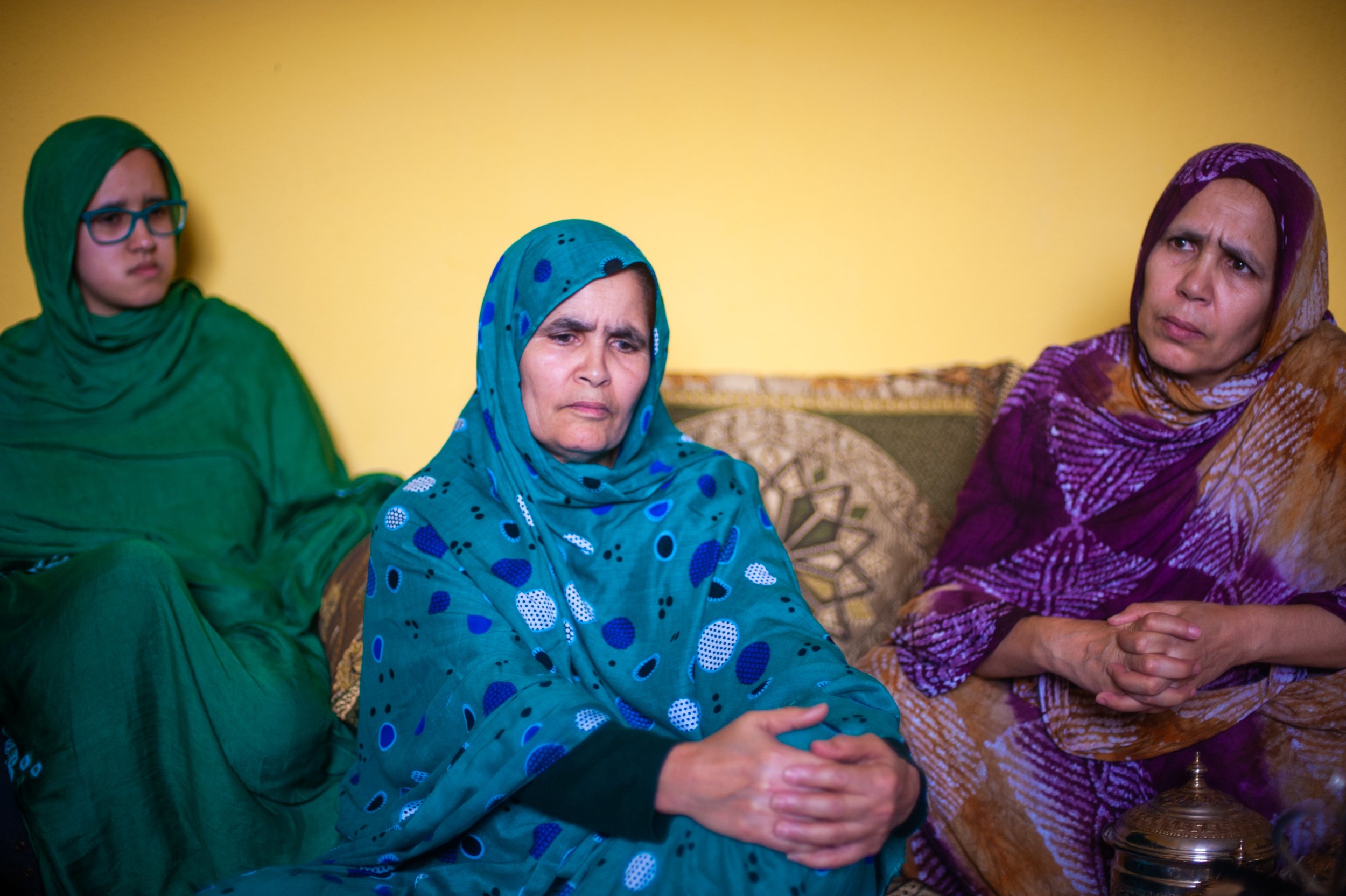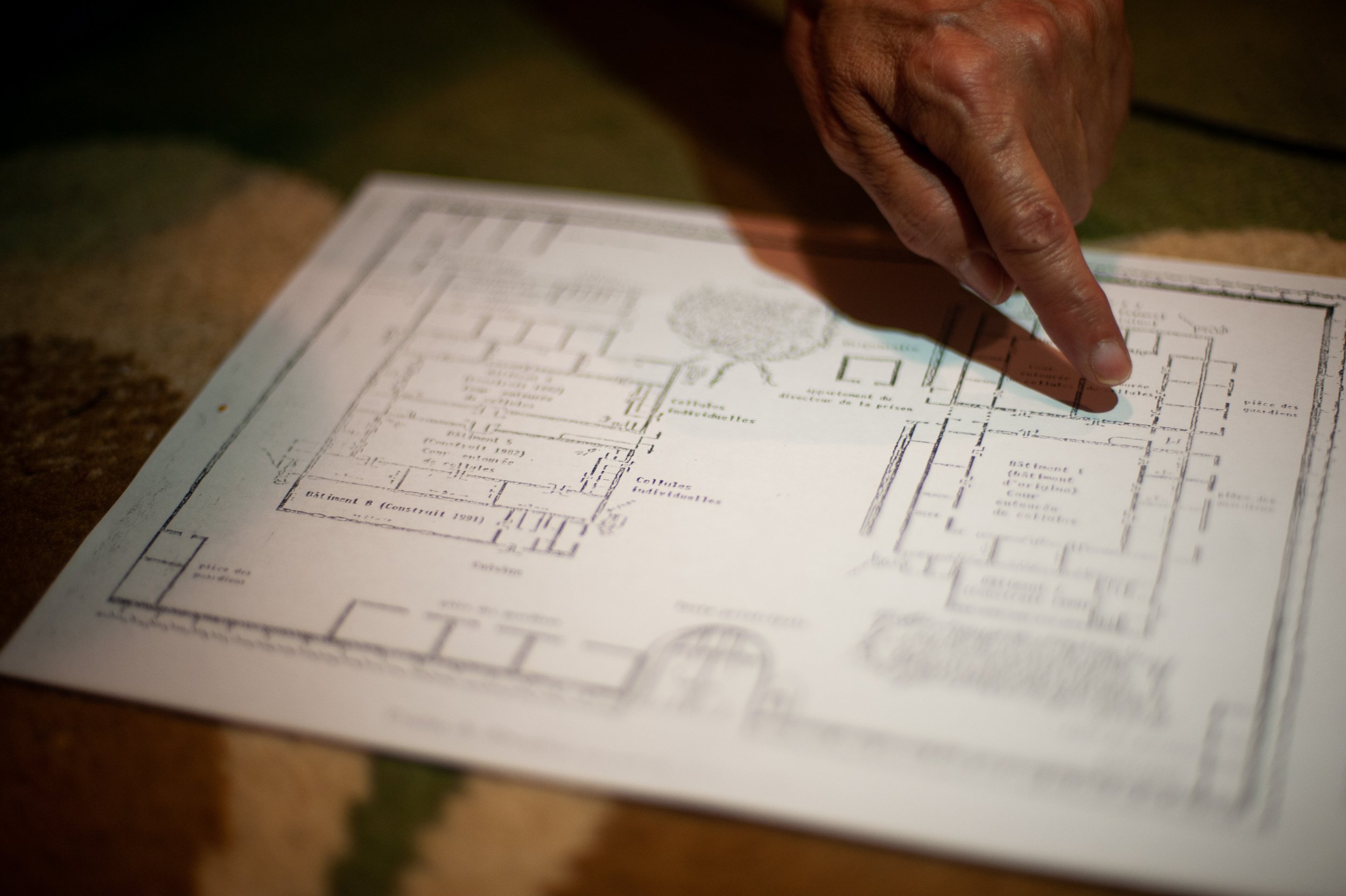Western Sahara
The invasion of Western Sahara resounds in the desert. The last African colony annexed by Morocco awaits a referendum to become independent. Meanwhile, nearly 200,000 Saharawis went into exile, almost 50 years ago, in the refugee camps of Tindouf, in southern Algeria. From the heart of the desert they hope to return to their land.
This project was developed for The Danish School of Media and Journalism during the “Final project seminar ” and won the José Luis Cabezas scholarship by Editorial Perfil.
Two women performs their typical during the celebrations for the 43rd anniversary of the begins of Saharawis independence movement in the wilaya of Auserd, Tinduf, Algeria, May 2016. In 1973, five Sahrawi from the “Polisary Front” attacked the border control of Janquet Quesat´s to release to El Ouali, leader of the Independence movement.
Laayoune - العيون

A general view of an avenue in Laayoune, the largest city of the disputed territory of Western Sahara, May, 2016. The city, with a population around 230,000, is under de facto administration by Morocco.

A saharawi woman dressed in the melhfa, a typical dress from the desert, waits for a taxi in Laayoune, Western Sahara, May,2016. On November 14, 1975, in the Tripartite Agreements of Madrid, Spain transferred de facto the sovereignty over its colony to two independent States: Mauritania and Morocco.

Women buy clothes to a street vendor in Laayoune, Western Sahara, May 2016. The Saharawi Arab Democratic Republic (SADR) was declared on February 27, 1976 in the town of Bir Lelhu, the next day Spain left the Sahara.

A boy plays in a terrace in Laayoune, Western Sahara, May 2016. Mauritania was defeated and renounced its territorial claims; in 1979 signed the peace with the Polisario Front in the Algiers Agreement. Nowadays Morocco claims the sovereignty over the entire territory.

Sun falls over the main entrance arch to the city of Laayoune, Western Sahara, May 2016. Morocco advanced on the southern part of the Sahara and built a 2,720-kilometer defensive wall to divide Western Sahara in two and defend it against attacks coming from Algeria, where the Saharawi government is in exile.

A road to the sea in Laayoune, Western Sahara, May 2016. In 1991 was stablished The United Nations Mission for the Referendum in Western Sahara (MINURSO) to observe the ceasefire and organize a referendum among the Saharawi people, but 30 years later the referendum has still not been held.

A street in Laayoune, Western Sahara, May 2016. Morocco represses any demonstration of the Saharawi identity in the occupied territory, while expelling activists, journalists and diplomats who arrive to corroborate the violation of human rights.

A ship stranded on the shore of the city of Laayoune, in Western Sahara, May 2016. The beach is guarded by military posts stationed every kilometer along the coast. To travel the 34 kilometers that separate the city from the sea is necessary to go through different military checkpoints.
Exile

Smail, an activist that works for the Polisario Front in a blog about political prisoners, show his ID from the Sahrawi Arab Democratic Republic (SADR) in Las Palmas de Gran Canaria, Spain, May 2016. The Canary Islands are an archipelago of seven islands that offer exile for 2,500 Saharawis trying to rebuild their lives. Las Canteras beach, at the northern of the Gran Canaria island, is the greatest confluence point.

El Mami Amar Salem smokes a cigarrete, as he remember his past as political prisioner by Moroccan security forces in Laayoune, during an interview in Las Palmas de Gran Canaria, Spain, May 2016. Mr. Salem was tortured and abandoned in the “No Man´s land”, the border that separates the Sahara from Mauritania. Nowadays he is the second Vice President of CODESA (Collective of Sahrawi Human Rights) where he denounces situations of human rights violations in Western Sahara.

Mohammed Dadach poses for a portrait wearing his darrah, saharawi's typical dress, in Las Palmas de Gran Canaria, Spain, May 2016. Dadach is knowed as the "Sahrawi Mandela" because he has been imprisoned for more than two decades by the Moroccan authorities and has become an important symbol of Western Sahara denouncing the violation of human rights.

The Ould Salek sisters prepare tea in their house in Fuerteventura, Gran Canaria, Spain, May 2016. According to Saharawi tradition, the host offers three teas to the guest, each one with their own meaning: the first is the bitter (like life), the second is sweet (like love) and the third is soft (like death).

Fatma Ould Salek (center) gets emotional during an interview next to her sister Mamia Ould Salek (right) in their house in Fuerteventura, Gran Canaria, May 2016. Both sisters were abducted by the Moroccan army with their parents in 1976, when they were 13 and 14 years old, and were released in 1991. During 16 years they suffered confinement in secret prisons under tortures and humiliations and finally obtained political asylum from Spain in 2001.

Omar Bulsan points the prision where his sisters, Fatma and Mamia, were reclused during an interview in Fuerteventura, Gran Canaria, May 2016. Omar Bulsan is part of the Polisario Front and is currently the ambassador of the Democratic Saharawi Arab Republic (SADR) in Cuba.
Tindouf - تندوف
A girl holds a heart-shaped necklace with the Saharawi flag painted on it, in the wilaya of Laayoune,Tindouf, Algeria, May 2016. The first measure taken in the Tindouf refugee camps was to separate them into provinces, called wilayas. Each wilaya have the name of a city in Western Sahara - Laayoune, Smara, Dakhla and Auserd - which in turn are divided into daïras, municipalities, which are divided into hays, neighborhoods.

Sulim Mohamed Naze, Chief of the water plant, holds a tomato produced by them in the wilaya of Laayoune, Tindouf, Algeria, May 2017. In the water plant they have 9 wells of up to 100 meters deep, the maximum allowed by Algeria, and they deliver up to 20 liters of water per day and per person.

A failed orchard in Tindouf refugee camps, Algeria, May 2017. The Tindouf area is located on the hammada, a vast desert plain of the Sahara Desert. Summer temperatures in this part of the hammada, historically known as "The Devil's Garden", are often above 50°C and frequent sand storms disrupt normal life.
Women watch the 43 anniversary celebration of the Sahrawi independence in the wilaya of Auserd, Tindouf, Algeria, May 2016. The total population of the Tindouf refugee camps is estimated at 165,000 persons.

Two boys in the wilaya of Laayoune, in Tinduf, Algeria, May 2016.

A girl uses her cellphone with her friend in the wilaya of Laayoune, in Tinduf, Algeria, May 2016.
A man covers his head with a turban at Center of the Woman in the wilaya of Laayoune, Tindouf, Algeria.

Mariam Ali Salem walks outside her Haima, a tent used by Sahrawi at the desert, in the outskirts of the wilaya of Laayoune, Tindouf, Algeria, May, 2016. During the exodus that took place after the Moroccan invasion, women were fundamentals in the establishment of refugee camps in Tindouf, while the men were fighting.

Mariam Ali Salem talks inside her Haima, a tent used by Sahrawi, in the outskirts of the wilaya of Laayoune, Tindouf, Algeria, May, 2016. The role of Sahrawi women was central already in pre-colonial and colonial life, but was strengthened further during the war years (1975–1991)

A group of women wait near the market, in the Wilaya of Laayoune, Tindouf, Algeria, May 2016.

A deposit of old guns in the "Resistance Museum" in the Rabouni administrative camp, Tindouf, Argelia, May 2016.

A girl takes her final exam in the school for women at the Wilaya of Laayoune. Tindouf, Algeria, May 2016. Among the most common causes of school dropouts in women is pregnancy at an early age. In Tinduf only primary education is provided at the camps, to access a secondary education young people must travel to the Algerian cities.

The Zadfi Zalik family plays in their house, at the Wilaya of Laayoune, Tindouf, Algeria, May, 2016. The Polisario Front has governed the camps since the beginning and have implemented policies and taken decisions: they operate courts, prisons, and an internal police force, control the camps borders, and is the only authority which camp residents have contact.
Remains of a construction in the wilaya of Laayoune, Tindouf, Argelia, May 2016.




